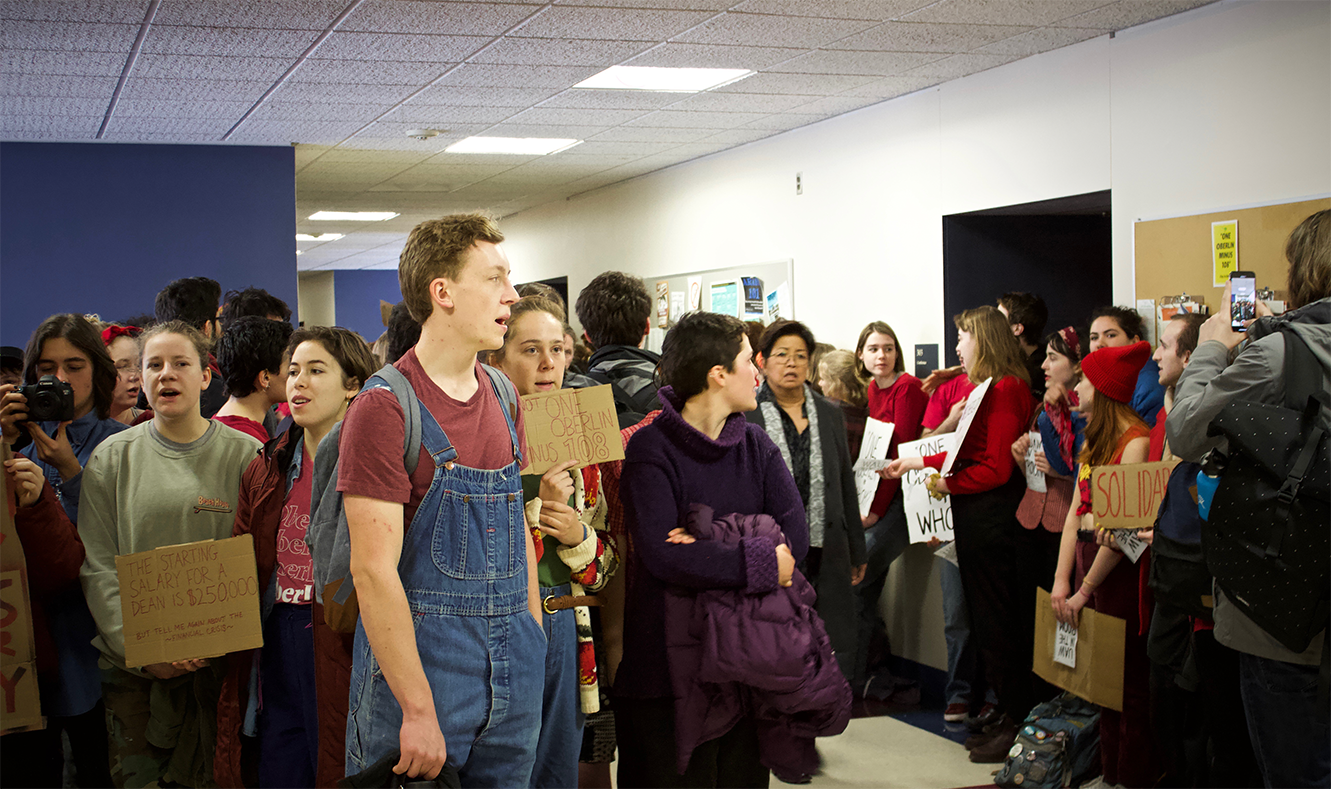Even when the stakes are not so drastic as the loss of 108 good jobs, financial strain induces widespread moral anxiety. Whether truly unavoidable or artificial, it brings cold economic calculus into deeply emotional conflicts, prompting uncomfortable visions of the past and future. It is also a time when an institution must put its cards on the table, stating its priorities and measuring its rhetoric against its actions.
The administration, for all its appeals to universal fiscal reality, has also used its public defense of the UAW firings to tell a specific story about Oberlin, its history, and its values. President Ambar’s letter announcing the outsourcings on Tuesday, her address on the matter to the general faculty on Wednesday, and VP Vazquez-Skillings’ presentation to the workers that morning all used the same rhetoric: “excellence” must be preserved, and crises of enrollment and structure must be addressed. The interim Student Senate has opted to meet this language of institutional priorities and values on its own terms, arguing that rather Oberlin’s “historical commitment to social justice” and “conscience,” now threatened by an injustice of such proportions, is its foremost value.
This may be an effective rhetorical strategy. But as our community navigates the great moral conflict before us, we must question whether this conflict can be contained within a dispute over Oberlin’s institutional values. How seriously can we, as activists, speak of the “commitment to social justice” of an institution that still sends many graduates to key roles in the financial sector and the soft-power arms of the American empire?
The intent of these objections is not (merely) cynicism. It is not to suggest that the longstanding struggle to define Oberlin’s history and thence its future is not in its own way a noble one. It is certainly not to dissuade or gate-keep the great coalition that has emerged from our community to fight for the same goal, whatever their motivation. It is merely to remind us that this struggle runs deeper than one institution and its fickle public image. The plight of these 108 workers is the plight of labor everywhere, and the plight of humanity.

